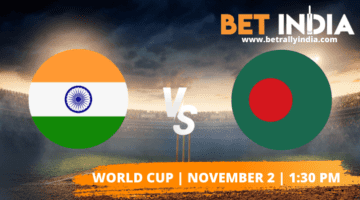History of the T20 World Cup: First Sanctioned in 2003
The T20 format was developed as a way to make cricket more appealing. And as expected in the world of cricket, the Englishmen led the charge.
In 2002, the English Cricket Board (ECB) was looking for a one-day competition to replace the now-defunct Benson & Hedges Cup – a cricket competition that featured first-class counties in England and Wales. The tournament had suffered from dwindling popularity, reduced sponsorship, and a lack of general interest from the younger generation.
The objective was to transform the game into an exciting, fast-paced format that most importantly, was nowhere as long as the other versions of the sport.
Enter Stuart Robertson – the marketing manager of the ECB back then, who carried out extensive research exploring the feasibility of such a format. He found that people would be interested in watching cricket if it was shorter and started in the late afternoon. The precedent was also set for him to follow – in the late 1990s, New Zealand saw a T10 competition titled Cricket Max which entailed 10 overs per inning.
Robertson made the presentation to the county board proposing the 20-over format – the vote was passed 11-7 in favour.
Friday the 13th for a Lucky Start
It was Friday the 13th in June 2003 when the very first sanctioned T20 match was played in the world. It came in the Twenty20 Cup – now known as T20 Blast or Vitality Blast – between Hampshire and Sussex. Hampshire won that match by five runs, scoring 153 runs in the first inning.
The very same day also saw four other T20 matches in the competition – and all of them proved to be a big hit.
Despite hosting the matches on the unlucky figure of Friday, the 13th, the entire experiment proved to be a boon rather than a bane. The reception was positive and people loved the newly invented cricket.
The next edition of the competition saw its first match at the iconic Lord’s between Middlesex and Surrey in July 2004. It attracted a crowd of 27,509 – the largest attendance for any county match at the venue in recent history.
From that point on, the format grew exponentially. On the back of unanticipated crowd numbers and popularity, other cricketing nations also started to adopt the T20 format. Even the world of online cricket betting was benefiting from this, seeing that there were smart, profitable bets to be made with a short turnaround time.
International Matches to Prime to Format Further
Australia and New Zealand played the very first T20 international match was played as a one-off game. Neither side took the match that seriously; it was more like a light-hearted fun affair to entertain the crowds.
The following years saw more standalone T20 matches played across the globe. England, South Africa, West Indies, Pakistan, Zimbabwe, Sri Lanka – all cricketing nations got a T20I match or two under their belts.
India played its first match in this format against South Africa in December 2006 in Johannesburg. India won that match by 6 wickets with 1 ball to spare, chasing down Protean’s 126.
Seeing the overwhelming acceptance of the game globally, it was evident that the T20 format is here to stay.
These matches also paved the way for other big T20 tournaments like the Indian Premier League, Big Bash League, Caribbean Premier League, among others.















